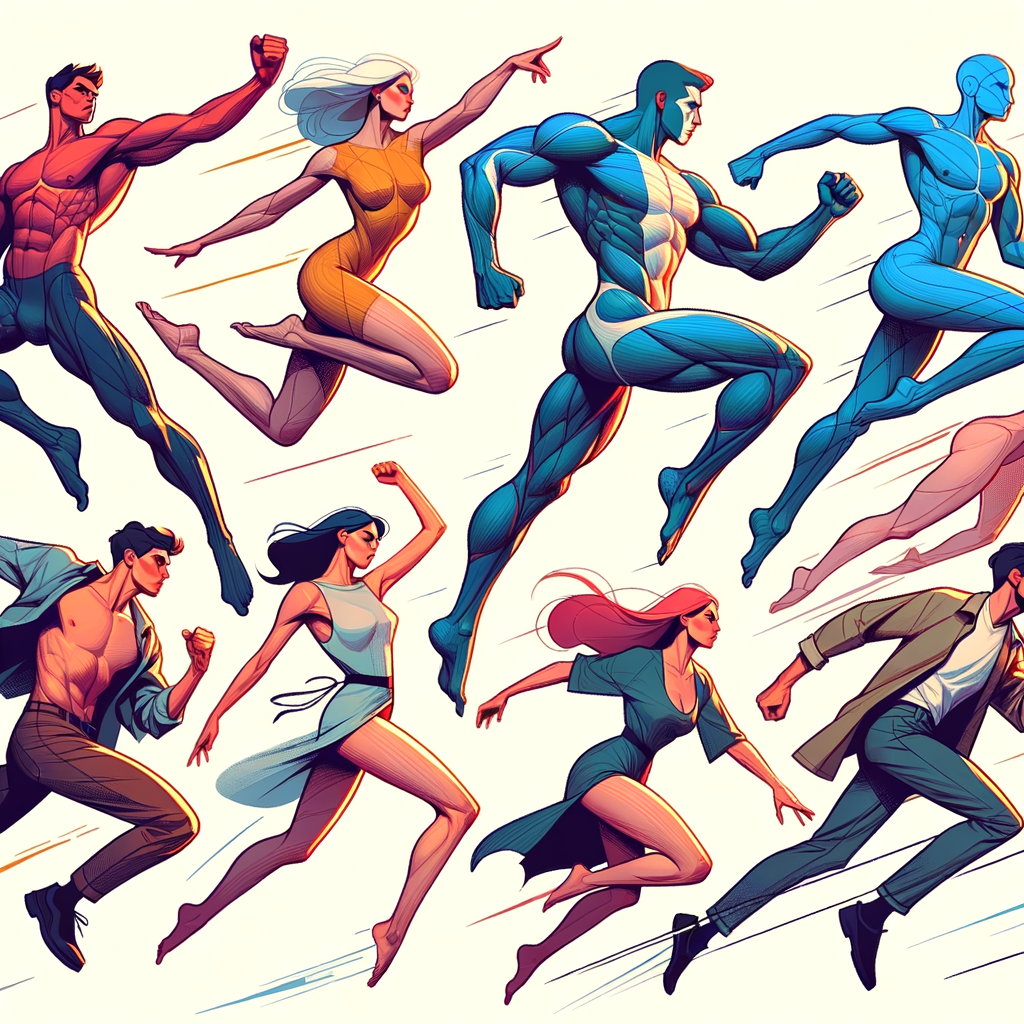
Creating dynamic characters that leap off the screen requires a deep understanding of anatomy and movement. In this article, we'll delve into several key principles and techniques that will help you bring your characters to life. Whether you're a beginner or a seasoned artist, enhancing your knowledge of character design is vital for creating compelling artwork. Let’s embark on this journey together to discover how to master the art of dynamic characters in digital illustrations.
Creating characters that feel alive and captivating is at the heart of digital artistry. This goal not only revolves around creativity but also relies on a strong grasp of anatomy and movement principles. Understanding how the human body moves and reacts in various situations greatly enhances your ability to design unique and engaging characters.
In this comprehensive guide, we will cover the following topics:
- An introduction to anatomy and its importance in character design
- The fundamentals of movement — understanding force and balance
- Techniques for sketching dynamic poses
- Tips for creating fluid and expressive movements
- How to apply these concepts in your digital art
Let’s begin with understanding anatomy, which serves as the foundation for creating realistic characters.
1. Understanding Anatomy
Before diving into character design, it is crucial to have a solid understanding of human anatomy. This doesn’t mean you need to memorize every muscle and bone, but knowing the major components of the body and how they work together will greatly improve your artwork.
Start by studying anatomy books or online resources that provide detailed information about human body structure. Pay special attention to the following areas:
- The skeletal system — understanding the positioning of bones helps in creating realistic postures.
- The muscular system — knowing how muscles stretch and contract during movement is essential for dynamic poses.
- Proportions — maintaining correct proportions is vital for believability.
Think of anatomy as the underlying framework of your characters. A strong grasp of these principles will allow you to convey personality through posture and body language.
2. The Fundamentals of Movement
Once you are familiar with anatomy, focusing on movement is your next step. Movement can be broken down into several key elements:
- Force: The driving energy behind movement. Understanding the forces at play will help you create more dynamic and believable actions.
- Balance: Characters should feel stable, even when in action. Study how weight distribution affects balance, especially in dynamic poses.
- Momentum: How a character starts, accelerates, and stops is influenced by momentum. Knowing how different forces interact will help you portray realistic movements.
To visualize these concepts, consider performing a series of movements yourself and observe how your body reacts. Sketch these movements to capture the essence of dynamic action.
3. Techniques for Sketching Dynamic Poses
With a foundational understanding of anatomy and movement, it’s time to sketch. The following techniques will help you draw more dynamic poses:
- Gesture drawing: Start with quick sketches that focus on the overall flow and movement rather than details. This exercise warms you up and helps capture the essence of a pose rapidly.
- Using reference images: Study photographs or videos of dynamic movements. Pose references are fantastic for understanding how different actions look in real life.
- Silhouette practice: Sometimes, stripping a character down to its silhouette can help you understand their posture and dynamic movement without getting bogged down in details.
Remember, the goal is to capture energy and dynamism in your sketches. Don’t be afraid to experiment!
4. Tips for Creating Fluid and Expressive Movements
Fluidity in character movement conveys greater realism and emotion. Here are some tips to enhance the expressiveness of your characters:
- Exaggeration: While realism is vital, slight exaggeration can convey emotions and actions more powerfully. Study animators and comic artists who excel at this.
- Follow-through: Objects don’t stop immediately when a force is applied. A character throwing a punch will have follow-through effects like arm movement after the punch.
- Anticipation: Before any action, there should be an anticipatory movement. For example, a character preparing to jump will crouch first.
Apply these principles in your sketches to create designs that feel alive and are full of personality.
5. Applying these Concepts in Your Digital Art
With all the techniques and principles outlined, the next step is to integrate them into your final digital artwork. Some best practices include:
- Layering: Use layers strategically in your digital software to separate the sketch, colors, and effects. This keeps your workflow organized.
- Lighting and shading: Pay attention to how light interacts with your character. Proper shadows can enhance depth and realism.
- Feedback: Seek critiques from fellow artists or online communities. Constructive feedback can provide new insights into areas for growth.
Lastly, practice regularly. The more you apply these concepts, the better you’ll become at creating dynamic and engaging characters.
In conclusion, mastering dynamic characters involves a combination of anatomy knowledge, movement principles, and the application of artistic techniques. By focusing on these areas, you can vastly improve your character design skills and breathe life into your artwork. Keep practicing, experimenting, and exploring the wonderful world of digital art!

